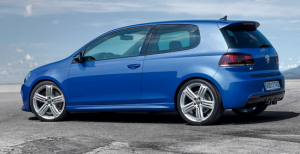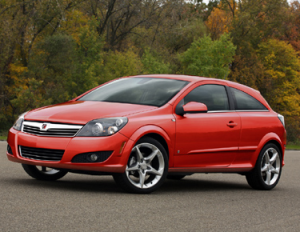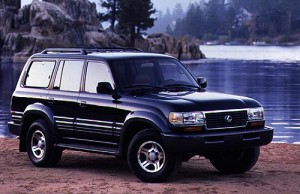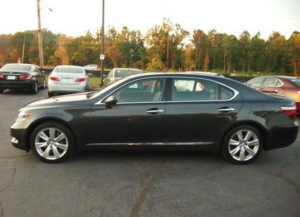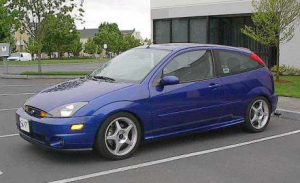Volkswagen Golf R: Used Car Reminder
Posted by Doug DeMuro in Used Car Reminder on | 6 comments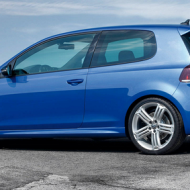
Although the Golf R has only been out of production for a year or two, I decided to include it here for one simple reason: everyone has already forgotten about it.
The reason for that is also simple: it was ridiculously expensive. In fact, the 2013 Golf R started at $35,000 with shipping for the 2-door, or $36,000 for the 4-door — and that’s before options. And I’m talking about options you might want, such as a sunroof.
So the Golf R was rather pricey as a new car, which led most people to remove it from their shopping lists. But here’s the thing: it’s starting to be a great deal as a used car.
For proof, I turn us to noted warranty company and occasional car dealer CarMax, who happens to have four Golf Rs at various locations around the country. The cheapest one? $29,000, for a one-year-old 4-door with only 15,000 miles. In other words: the market has spoken, and these things are getting down to a more reasonable price point.
And that’s a good thing, since these cars have a lot to offer. Think 256 horsepower, 243 pound-feet, and standard all-wheel drive. It’s like a GTI STI. And there’s also that neat touch about including a manual as the only available transmission.
So, remember this, ladies and gentlemen: the Golf R. It’s cheap now, and it’s only getting cheaper. Just make sure to buy it with a warranty.
Saturn Astra: Used Car Reminder
Posted by Doug DeMuro in Used Car Reminder on | 9 comments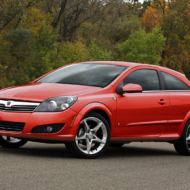
I was sitting here, brainstorming ideas for my “GM Bad Idea” segment, when it struck me: occasionally GM has a good idea. They’re few and far between, but they do occasionally happen, and the Saturn Astra is one of them.
For those of you who don’t remember the Astra, let me refresh your memory. It all goes back to the 1990s, when Saturn’s entire car lineup consisted of the S-Series, a compact front-driver offered as a coupe, a sedan, or a wagon. Eventually, the S-Series was redesigned, and then turned into the Ion, which lost some of the high-quality charm found on the earlier models.
It was around that time Saturn was expanding its lineup. They first added a midsize sedan, called the L-Series (and later, the Aura), followed by a compact SUV (the Vue), a minivan (the Relay), an SUV (the Outlook), and a sports car (the Sky). Unfortunately, all this meant that by about 2007, Saturn was just another GM brand with a lineup full of rebadges.
Enter the Astra. Intended to replace the dated Ion, the Astra was sourced directly from the European-market Opel Astra. It was offered only as a 3- and 5-door hatchback, and it came out for the 2008 model year.
Unfortunately, the Astra was too little, too late. Saturn was basically finished, and the Astra lasted for just one solitary model year. The brand died off shortly thereafter.
So why is it a good idea? Well, the Astra was a neat car. It had distinctive styling, it handled well, and the interior was reasonably nice, if you got past the bizarrely buttony stereo. Plus, it was unique to the Saturn brand — and it gave people the opportunity to actually own one of the European hatchbacks that journalists are always clamoring for.
If you’re in the market for a used hatchback, the Astra is worth adding to your shopping list. Parts will remain available, and the Astra is probably a little cheaper than it should be. Assuming, of course, that you can find one.
Lexus LX450: Used Car Reminder
Posted by Doug DeMuro in Used Car Reminder on | 7 comments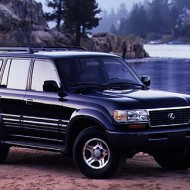
Some of my “used car reminder” posts are little more than a thinly veiled attempt at talking about a car I find interesting. This one, on the other hand, is different. In this case, I’m reminding you about a used car that you a) may have forgotten, and b) shouldn’t have forgotten.
The car in question is the Lexus LX450, which was sold for only two model years: 1996 and 1997. The reason I’m reminding you about the LX450 is that the Lexus is completely identical to the Toyota Land Cruiser in virtually every way. In other words: when you go searching for a used 80-series Land Cruiser, don’t forget to check the listings for the LX450.
Under the hood, the LX450 used the Land Cruiser’s 4.5-liter straight six, which made 215 horsepower and 275 pound-feet of torque. It’s no dragster, but then again, that’s probably not why you’re considering an LX450.
Inside, the LX450 was pure Land Cruiser in every way, though Toyota says there’s more sound deadening. It was the same story outside, where the LX450 used styling that was every bit the same as Toyota’s, except with a little more body cladding.
I’ve heard a few people say the LX450 was “softer” than the Land Cruiser, and, in terms of suspension, that may be true. But it’s important to remember the LX450 also offered a crucial Land Cruiser option: locking front and rear differentials. Find one with this feature, and you can do anything the Land Cruiser guys can do.
In later years, the Lexus LX became more differentiated from the Land Cruiser. In 1996 and 1997, it was just the price: the LX carried a $7,000 premium from new. These days, they cost the same, which is why I’m reminding all Land Cruiser shoppers not to forget the LX450.
Lexus LS 600h L: Used Car Reminder
Posted by Doug DeMuro in Used Car Reminder on | 8 comments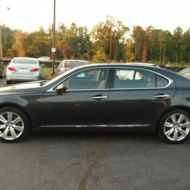
I think we’d all agree that Plays With Cars doesn’t devote enough attention to staid, quiet Japanese luxury sedans. So I’ve decided at this moment to change that fact with a piece about everyone’s favorite full-size Japanese luxury car: the LS 600h L.
For those of you who don’t know the LS 600h L, allow me to explain. Take a normal LS 460, then stretch it (now you have an “LS 460 L”), then add a hybrid motor, and it becomes the LS 600h L. I’m not sure how they arrive at “600” considering it’s a 5.0-liter motor, but I do know it involves a lot of spaces in the model name.
So why am I bringing this up? Obviously the LS space 600h space L is a heinously overpriced luxury sedan, considering it starts at something like $121,000. Who would buy that? The answer is: no one. And that’s why it’s a great used car.
Go to AutoTrader.com right now and look for used L S 60 0h Ls. Even though they use a hybrid V8, they follow the same depreciation curve as V12-powered Mercedes S-Class and BMW 7-Series models. The result is that you can pick up a 2008 model – that’s still the current body style – for something like $45,000. Some high-mileage ones are in the thirties.
Not only is that a good price, the car isn’t so bad either: it’s got 440 horsepower, you can lie down in the back seat, and the EPA says it gets 20 mpg combined and up to 23 mpg highway. By comparison, the S600 gets 19 mpg highway and only 14 mpg combined although, to be fair, you can still lie down in the back seat.
The result: if you wanted a luxury car, you could get a new 3-Series. Or you could be just like your favorite environmentally conscious hotel and buy a five-year-old L S 6 0 0 h L.
Yeah, I’d pick the BMW, too.
Ford SVT Focus: Used Car Reminder
Posted by Doug DeMuro in Used Car Reminder on | 11 comments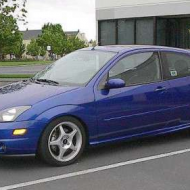
I know, I know: this one isn’t exactly off-the radar. But I realized something about the Focus SVT the other day: it’s really cool.
For starters, some background. We all know the first-generation Ford Focus, because it came out in 2000 and lasted for like a decade, as if it was a Mercedes SL-Class. Well it wasn’t an SL-Class, and anyone who drove one knew that. But the SVT was kind of cool.
Here’s the deal on the SVT Focus: it came out for the 2002 model, initially as a 3-door hatchback. In 2003, a 5-door SVT model was added. And 2004 was the final year, which means these things aren’t really that common.
In a world of hot hatches, the SVT Focus was pretty cool. Power wasn’t exceptional, at just 170 horses, though I’m sure people all over the rural South are putting down “two fifty to thuh whuls.” But it was the manual-only transmission, the sweet (and very subtle) bodykit, the unique wheels, and that gorgeous blue color that made the SVT Focus really stand out. The fact that you could get it in five-door was icing on the cake.
You never see the SVT Focus anymore, likely a result of the fact that a) it was unreliable; b) it was pretty rare, even when new; or c) you don’t spend enough time at rural dragstrips. But they’re out there, somewhere, a reminder of a rare bright spot during one of Ford’s darker periods. Some might even be that gorgeous blue color.
